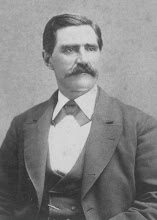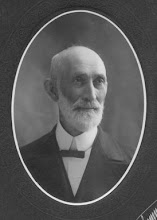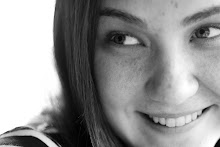Shortly after discovering our wonderful treasures and the stories behind them, my mom found an advertisement for a historical paper collectibles show about 40 minutes from home. Being the enthusiastic mom-and-daughter duo that we are, we thought it would be a fun field trip, with my other sister, to take the book and telegram and see what we could learn.
Upon entering the convention center, we were directed into the exhibit hall to meet the “expert,” a dealer/exhibitor named John Heleva (who wasn’t exactly the Antiques Roadshow type). I was young at the time, but my mother pulled out her journal recently, and here is how our conversation with Mr. Heleva went...
We showed him the book.
“Hmmmmm....a thousand dollars, maybe” he said.
My mother was honestly surprised. It seemed more important than that to her, but, she figured: what do I know? We realize now, that was exactly what he was thinking: “What does she know?” There she stood, with me and my sister, Ashley, in a wheelchair; she was obviously “just a mom”.
We showed him the telegram. “Wow”, he whispered, in spite of himself.
Silence.
“Is it worth more than the book do you think?”
“Naaah. I’d sell them as a set. Four to five thousand.”
That makes it worth more than the book if my math is correct, thought Mom. This was the first sign that everything wasn’t quite right here.
“Sell to whom?” she asked.
“I know the guy who bought out all the Central America treasure. Dwight.”
“Really? Can you tell me how to reach him?” It was a lead at least to someone who might care more than this guy.
His answer shocked us. “No”, he replied after a long pause, “You’ll have to deal through me.”
“I see. Fine...thank you for your time.”
The next time we saw him, as we were leaving the show, he was sitting at his booth, his back to us, stuffing down a sandwich. His pants were too low, and we had to avert our eyes.
Before we left the show however, we stopped at a stamp collection booth, something I was into as a little girl. As I was looking at the stamps, my mom was looking at an original art piece of a side-wheel steamer. She struck up a conversation about the art piece with the dealer.
“It’s beautiful,” she said. “My grandfathers captained paddlewheel steamers in the Pacific Northwest. In fact, that’s why I’m here. My third great-grandfather was the 2nd officer on the S.S. Central America and I have some artifacts with me connected to the shipwreck.”
We showed him the things.
There was a wonderful pause.
“Wow,” the exhibitor and a nearby patron responded in unison. “You know what you ought to do with that?” said the exhibitor with excitement. “Take it over to the F.U.N. show at the Orlando Convention Center—just down the street here. Ask for David Bower, booth 400 something, section E, left hand side of the aisle, I think.”
We felt the thrill of inner confirmation though we had no idea what F.U.N. stood for. The exhibitor went on to explain that the F.U.N Show was the biggest coin collector show in the nation.
Of course! we realized. The Central America was a sunken gold mine, recovered in 1989; the treasure had just begun entering circulation! Who would be more interested in our artifacts than…TA! DA!...coin collectors!
And there they were – all those numismatic enthusiasts -- all together that very weekend – right across the street...











